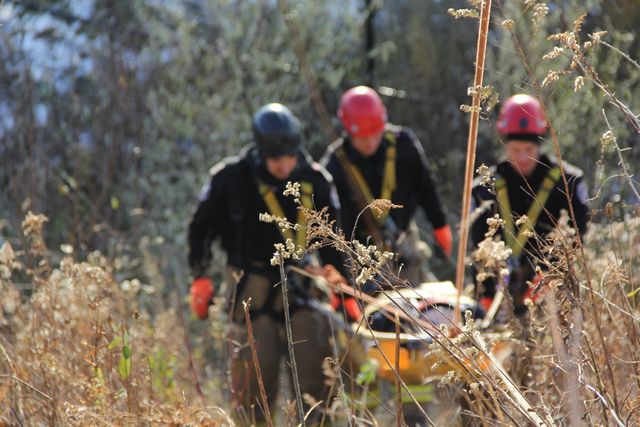2013 NFPA 1006 - Chapter 5 TECHNICAL RESCUER - Rescuer Core Skills
Also covers Chapter 4 and AHJ requirements according to NFPA
This course is the entry level Technical Rescue course for NFPA 1006 compliance to Technical Rescue subjects (i.e., Rope Rescue, Wilderness, Collapsed Structure / USAR, water, Confined Space, etc.,)
This is compliant to the latest 2013 NFPA 1006 Chapter 5 requirements: Technical Rescuer Professional Qualifications..

COURSE SUMMARY
We will teach and then evaluate all the core requirements for 2013 NFPA 1006 Chapter 5 of NFPA 1006, and discuss the changes from the older 2008 standard which some still train to.
- What is the NFPA?
- NFPA relevant standards (1006, 1670, 1983, etc.)
- What is the AHJ and how it is relevant
- Medical training requirements*
- Leadership and Incident Command
- Managing Resources
- Incident Surveys
- Scene Surveys and Searches
- Helicopter Support Operations
- Scene Safety
- Single points anchors
- Site Operations
- Incident Size up
- Hazards Control
- Victim Management
- Equipment Maintenance
- Rescue Knots and Rigging Belay and Haul systems s
- Belay and Haul systems
- Litter / Stretcher systems
- Low Angle Rope Rescue techniques
DURATION
This class will take place over 3 full days and one evening.
(Sometimes we run over 4 days)
Please not that the cut off is 7 to 14 days before
TRAINING
This course will be taught thoroughly with pre-course study and daily evaluations. The Instructor Student Ratio averages 1:6 or better.
TESTING
Upon commencement of the testing portion every person will be explained the requirements of the test. They will be given an opportunity to attempt the challenge two times but without coaching.
If two attempts are unsuccessful then a fail is registered
CERTIFICATES
Colour Certificates and plastic Wallet cards are awarded to successful candidates upon successful completion of the course and testing.
In the event that you should take the whole course but be unsuccessful in passing the test - then a Certificate of Attendance for the rescue training will be awarded but without the endorsement for having passed the NFPA compliant Technical Rescue testing portion.
SAFETY
Everyone is responsible for their safety.
We are especially cognizant of safety on our courses.
PPE & EQUIPMENT
We can provide all issue PPE for this course including Helmets, Harnesses and rescue gear. If you wish to use your own harness we need to ensure that it is a rated harness.
You should provide your own
- Gloves for working with rope
- Boots with ankle support
- Eyewear to protect your vision
- Lunch and water / drink each day
Prerequisites:
* You should have current First Aid and CPR (HCP Level) training to the level required by the AHJ. Some organisations require EMT-B as a minimum or EMR etc.
Fitness
This is a physical course that is mostly practised in our outdoor and practical environment. A good basic level of fitness is required for the physical carriage and hauling of rope and litters / stretchers.
Candidates applying who have a history of medical or fitness concerns such as high blood pressure, heart conditions, Meniere's disease, etc., should contact our registrations first to discuss suitability and acceptance.
EXCLUSIONS
We have a zero tolerance policy of permitting the use alcohol and narcotics on our courses. People impaired by alcohol or drugs, including prescription medication, will not be permitted to take the course.
Also candidates who smoke or vape will need to do so outside of the buildings and also away from the training cordon.
Ropes and Knots

(Figure 8 on a bight)
Tying knots is a psychomotor skill that comes easier to some than others. Although we cover them you may like to know that the knots will include:
- A figure 8 on a bight w/safety
- A figure 8 follow-through w/safety
- In line or butterfly (three way)
- A clove hitch w/safety
- A half hitch
- A bowline w/safety
- An overhand safety knot
- A double fisherman’s/grapevine w/safety (or adequate tail)
- A water knot (overhand bend) w/safety
- A square knot w/safety
- A prussik hitch to a rope / mainline
- A tensionless hitch/high strength tie-off (minimum of 4 - 7 wraps around anchor).
Hardware, Descenders and Ascenders etc
We will teach and use many items of hardware such as the Figure 8, the brakebar rack, the Petzl ID and the MPD and also explain the different equipment ratings (such as T rating, G rating etc)

